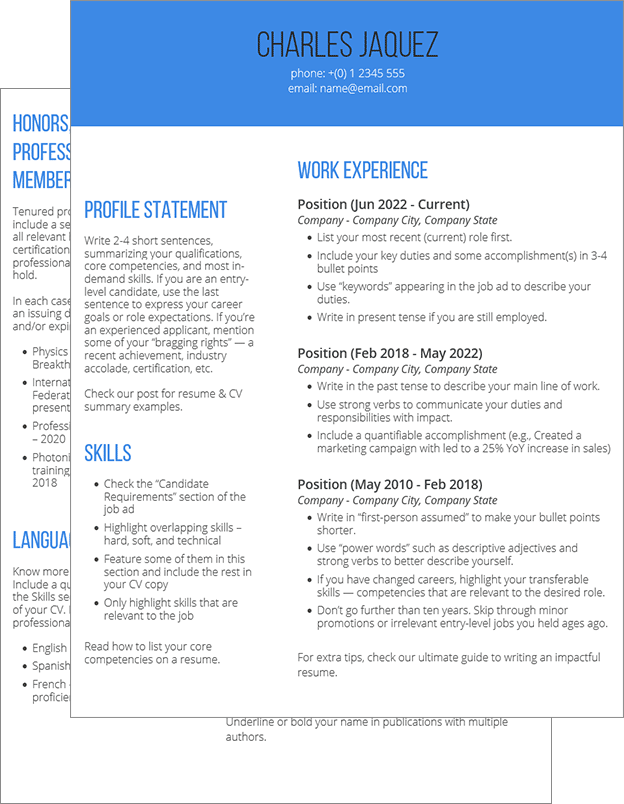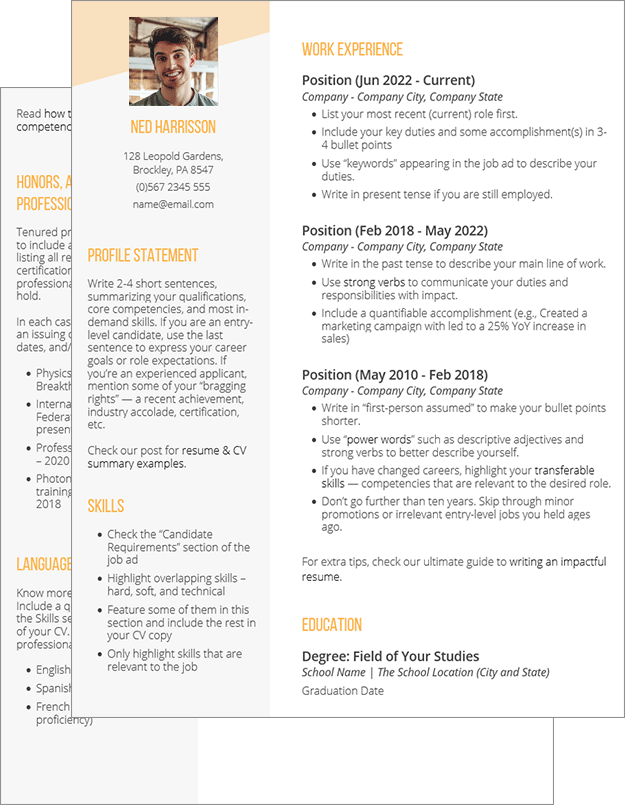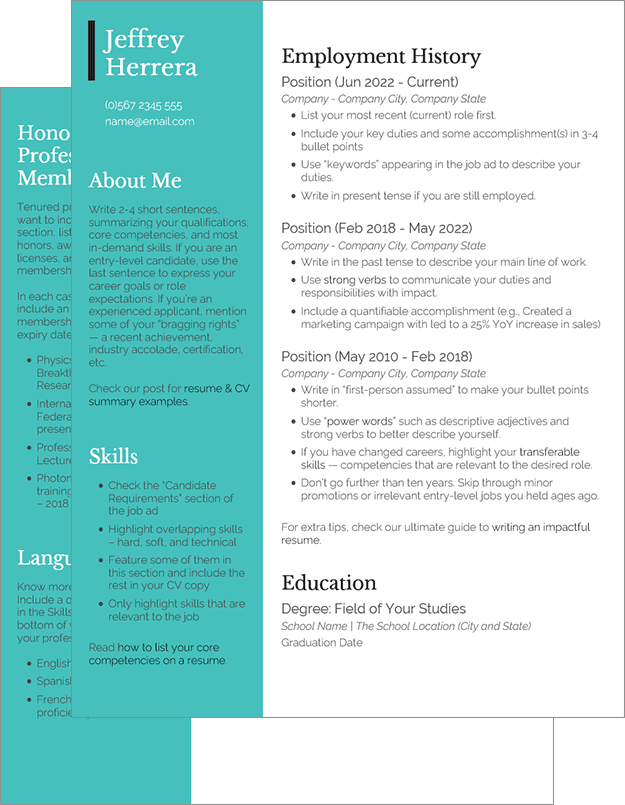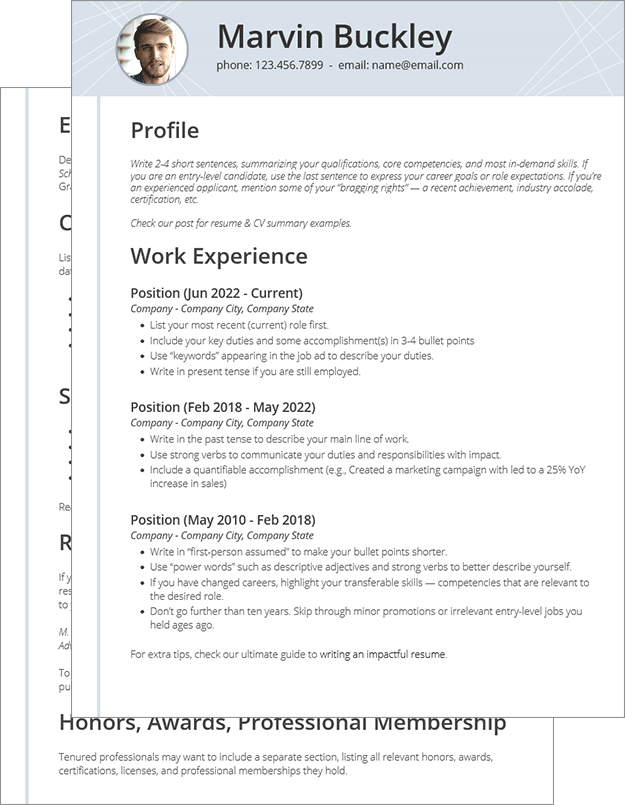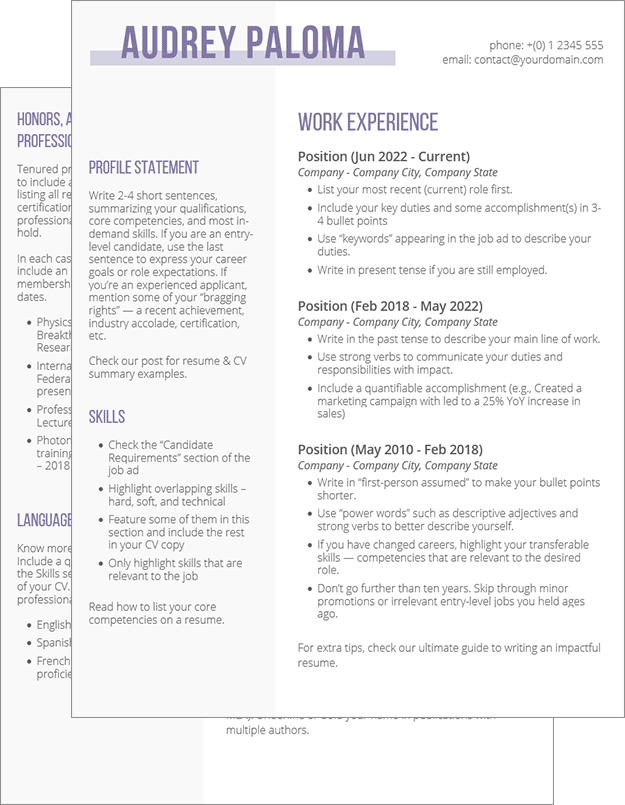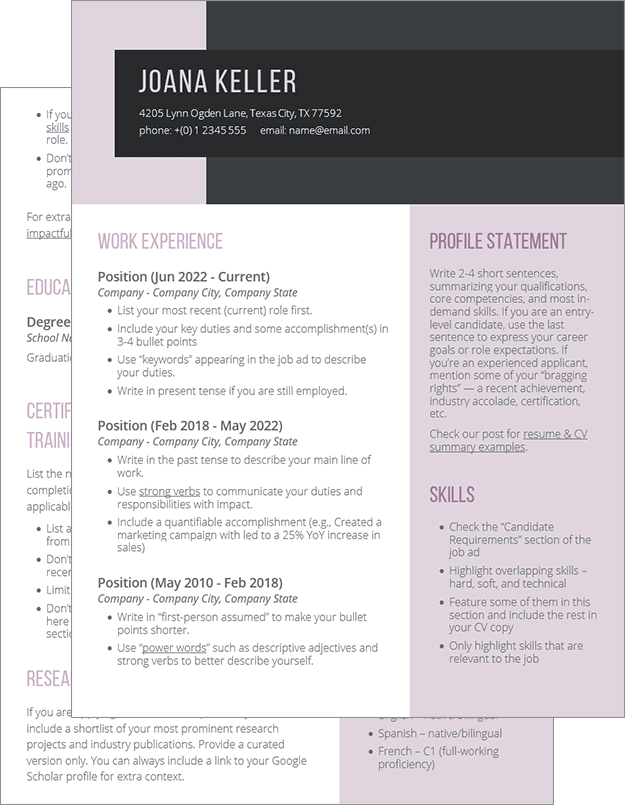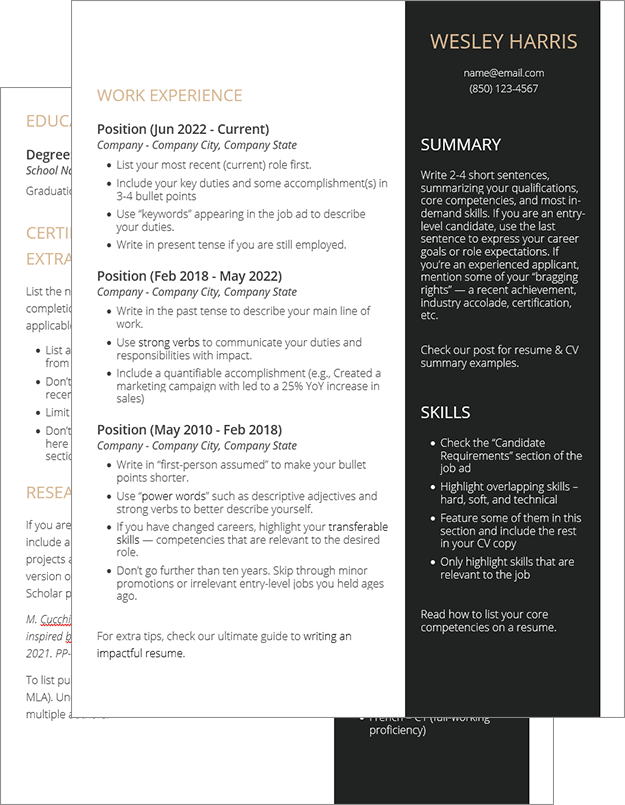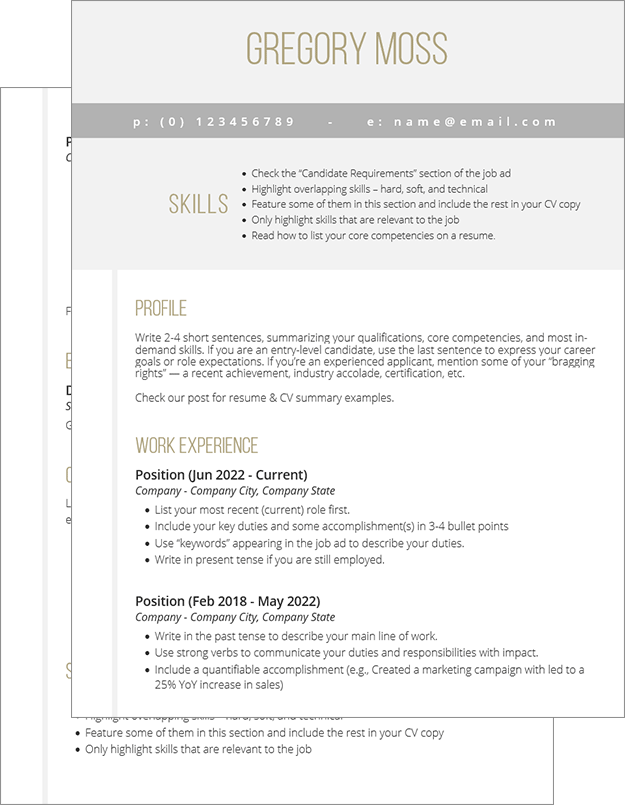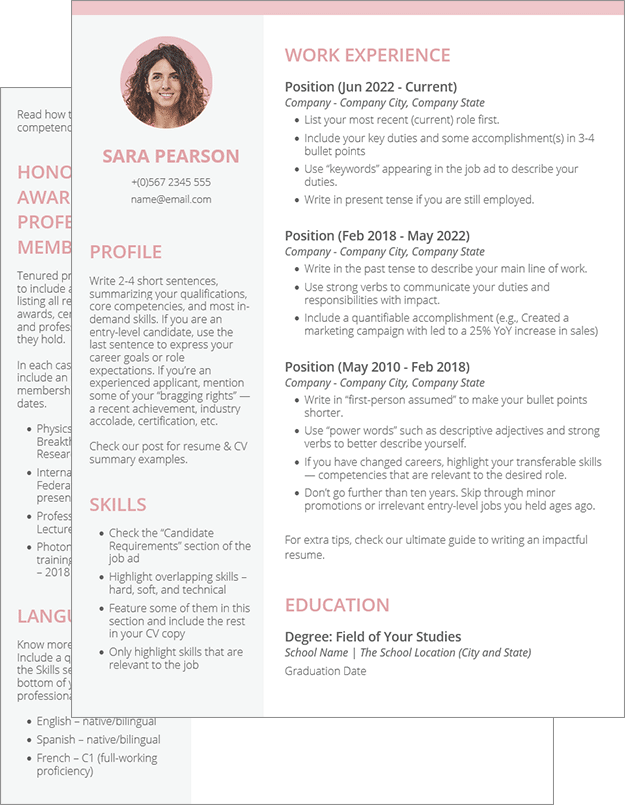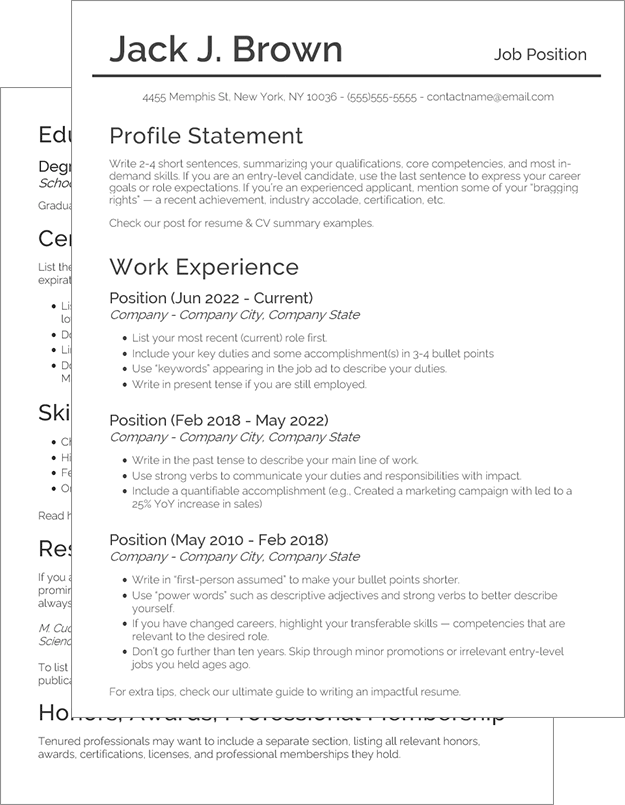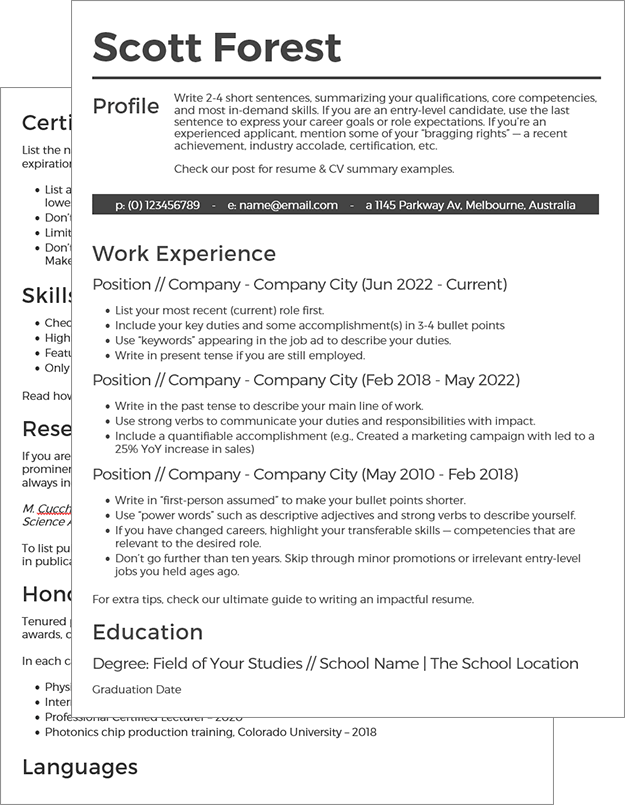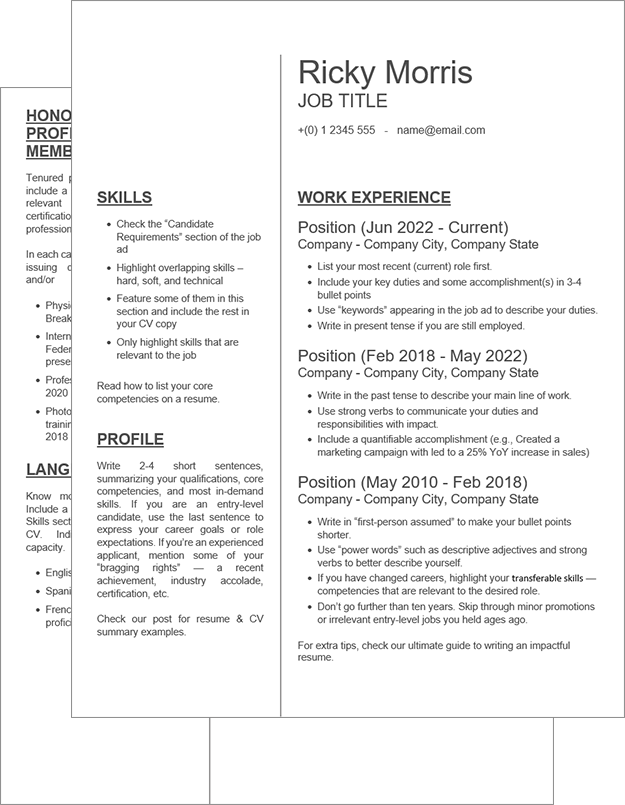Free CV Templates to Download and Customize
Your work experience may be a great fit for the job position but even the most incredible credentials can get disregarded with the wrong CV layout.
Stand out as a job applicant with our strategically-designed and action-tested free CV templates.
Modern CV Templates
Writing a CV used to require hours of time and a dozen of Google searches. Not anymore. Freesumes provides you with a comprehensive kit of CV writing materials — free Word CV templates, CV samples, and actionable guides, covering formatting, layout, and design.
Professional CV Templates
Discover second-to-none free CV templates you can customize in just a few clicks in Word.
No more agonizing in front of a blank page. Get done with CV writing in a whiz!
Simple CV Templates
Minimalistic, yet convincing CV templates that make readers crave to get to know you in person. Suitable for every industry and every profession.
Resume vs CV: What Are the Differences?
Resume and CV (Curriculum Vitae) are two terms, used interchangeably by most Europeans. In both cases, they stand for a document, presenting your work experience, skills, and educational credentials in a specific format — chronological, functional, or combinational.
In the US, “resume” is the term recruiters in the industry prefer. A “CV”, in turn, is a term used by academic institutions and some federal agencies to describe a longer version of a resume.
Learn more about the minor differences between resumes and CVs.
Sample CV Outline
The secret to writing a good CV in under an hour? Learn how to outline like a pro!
Don’t start with a blank page each time. Instead, select your go-to CV template and add draft sections to it. Then quickly tweak it each time before you apply for a new job.
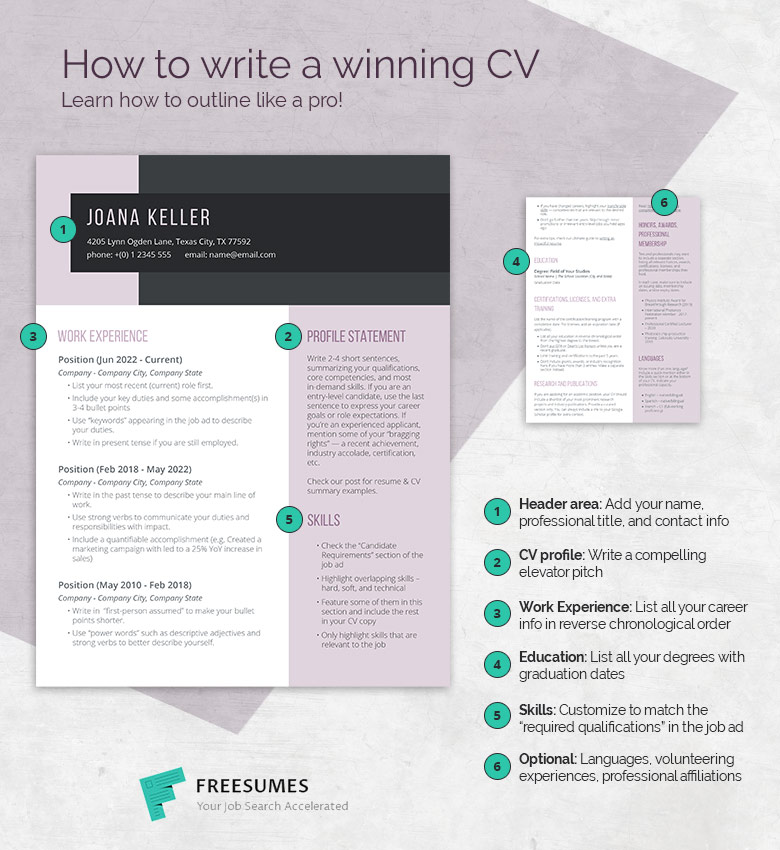
Every CV has to include the following sections:
- Header area: Add your name, professional title, and contact information (phone, email, LinkedIn). Then you may include a professional headshot (if you use a photo CV template).
- CV profile: Write a compelling elevator pitch — a 2-3 statement summary of your career history, core competencies, and most marketable skills.
- Work Experience: List all your career information in reverse chronological order. For each job entry, add 2-4 short bullet points, spelling out your duties and some major accomplishment(s).
- Education: List all your degrees from the highest to the lowest with graduation dates. Include Major/Minor information only if you are a recent graduate. Include other professional training and certifications if relevant.
- Skills. Make a featured skills section, spotlighting a combination of soft and hard skills. Customize it to match the “required qualifications” in the job ad.
- Optional: Languages, volunteering experiences, professional affiliations.
Need more inspiration? Browse our massive collection of free CV samples for different industries, professions, and experience levels!
FAQs about CV Templates
Got some more questions about CV formatting and design? We have answers!
Are Freesumes CV templates Really Free?
Yes. You can find over 100 professionally-designed CV and resume templates on Freesumes for free. Select among minimalistic, modern, creative, and standard free CV templates, made by pro designers and vetted by experienced HR executives.
What should a full CV include?
A full CV should include the following sections: a header with your contact information, a short CV profile, an in-depth work experience section, education, certifications, and languages. Optionally, you can also make a featured skills section or pack this information into a longer profile statement.
What should you not put in a CV?
You should never put the following information on a CV:
- Age, gender, ethnicity, or marital status
- Personal social media accounts
- Salary information on past roles
- Professional references (unless requested)
- Misleading or false statements
- Fake employer information
- Lengthy personal introductions
Also, make sure that your CV doesn’t look like a wall of text or contains spelling/grammar mistakes.
How far back should a CV go?
Limit your CV history to the past 10-15 years if you are a tenured employee, Freesumes HR experts recommend. However, don’t list all work experience during this period unless they are relevant to the job you are after. Provide a curated version of your career history — such that explains why you are qualified for the new role.
What is the best CV format?
The best CV format is (reverse) chronological. In this case, you present your career history from the current (most recent) role to the earliest one. A chronological CV format helps the employer understand your career progression and duration of employment in different roles, plus it lets them easily estimate your current level of seniority. Most recruiters prefer this CV format to alternatives – functional and combinational CVs.
Should you put your age on your CV?
No, you should never put your age or date of birth on your CV. Most employers have anti-discrimination practices in place, prohibiting them to ask candidates about personal information. When you voluntarily give it away, it puts them in a position where their hiring decisions might be questioned for bias (positive or negative). So for some, it’s just safer to reject candidates sharing personal details altogether than deal with minimal (but possible) accusations later on.
Does a CV need references?
No, you shouldn’t add a list of references to a CV unless this is one of the job application requirements. Most often, employers will ask to provide a list of professional references later in the application process if these are warranted.
How long does it take to write a CV?
Depends on your skills and approach to writing. If you are unprepared, you can easily spend 5+ hours, struggling to hit one page. But if you are using a CV template with all sections pre-charted for you, you can get done with CV writing in an hour or so!
